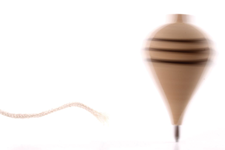Disaster recovery framework
Unwind

© Lead Image © lucato, 123RF.com
A simple Bash shell script can be a very powerful tool: Relax-and-Recover generates rescue media from running systems, takes care of backups, and helps when migrating computers to new hardware or converting to virtual machines.
If you are you looking to migrate the system and data on your sad, old laptop to a new device or you have a server that's been standing in the corner for years consuming electricity that would be better off as a virtual machine, the simple Relax-and-Recover [1] shell script can help. This disaster recovery framework for Linux licensed under GPLv2 creates rescue disks (USB sticks, CDs, PXE boot images) and saves the data – optionally in cooperation with an external backup solution.
During subsequent recovery of the data, the tool proves to be a flexible partner that also takes hardware changes into account. Relax-and-Recover is thus not just an emergency tool, it is also a useful migration tool. Physical computers thus become virtual machines through Physical-to-Virtual (P2V) migration; the way back to physical hardware with Virtual-to-Physical (V2P) migration is also possible, and you can even migrate from one virtualization solution to another through Virtual-to-Virtual (V2V).
Our test team worked on Debian 8 ("jessie") and Ubuntu 16.04 (Xenial Xerus) with Relax-and-Recover current stable version 1.17.2 and the latest version 1.18 from the GitHub repository (March 2016) [2]. We produced a rescue medium and a backup of a desktop computer. We also backed up a legacy server, combining the script with an external backup solution to do so. After this, the rescue systems and backups formed the basis for converting the physical hardware to virtual machines.
[...]
Buy this article as PDF
(incl. VAT)
Buy Linux Magazine
Subscribe to our Linux Newsletters
Find Linux and Open Source Jobs
Subscribe to our ADMIN Newsletters
Support Our Work
Linux Magazine content is made possible with support from readers like you. Please consider contributing when you’ve found an article to be beneficial.

News
-
Two New Distros Adopt Enlightenment
MX Moksha and AV Linux 25 join ranks with Bodhi Linux and embrace the Enlightenment desktop.
-
Solus Linux 4.8 Removes Python 2
Solus Linux 4.8 has been released with the latest Linux kernel, updated desktops, and a key removal.
-
Zorin OS 18 Hits over a Million Downloads
If you doubt Linux isn't gaining popularity, you only have to look at Zorin OS's download numbers.
-
TUXEDO Computers Scraps Snapdragon X1E-Based Laptop
Due to issues with a Snapdragon CPU, TUXEDO Computers has cancelled its plans to release a laptop based on this elite hardware.
-
Debian Unleashes Debian Libre Live
Debian Libre Live keeps your machine free of proprietary software.
-
Valve Announces Pending Release of Steam Machine
Shout it to the heavens: Steam Machine, powered by Linux, is set to arrive in 2026.
-
Happy Birthday, ADMIN Magazine!
ADMIN is celebrating its 15th anniversary with issue #90.
-
Another Linux Malware Discovered
Russian hackers use Hyper-V to hide malware within Linux virtual machines.
-
TUXEDO Computers Announces a New InfinityBook
TUXEDO Computers is at it again with a new InfinityBook that will meet your professional and gaming needs.
-
SUSE Dives into the Agentic AI Pool
SUSE becomes the first open source company to adopt agentic AI with SUSE Enterprise Linux 16.

